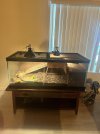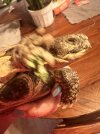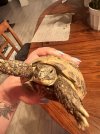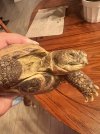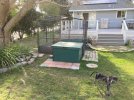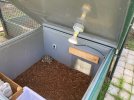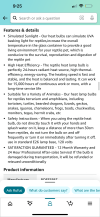Clizaola
New Member
Hi everyone. I am new to the forum and a new tortoise owner. My 18 year old son brought home 3 Russian tortoises last October and was told they were extremely low maintenance. He followed the previous owners instructions for their care and did little of his own research. About a month after they came out of hibernation, 2 of the turtles had eye infections and one clearly had a respiratory infection. I took over their care and moved them into a warmer area of the house, changed their diet and began giving them zoo med eye drops. Almost immediately, the female with the respiratory infection got better. The male has one closed eye and has always been active and a very good eater. After a week of the zoo med drops he is now able to open his eye but not fully and I can not see his eyeball. He eats a variety of green leaf lettuce, mustard or turnip greens, and Romain daily, and the occasional carrots or bell peppers to help with possible vitamin a deficiency. I also include kale, zucchini and dandelions when they are available. All of the turtles now soak at least once a week in warm water for 15 minutes each. There is 2 uv bulbs in their enclosure and I use organic garden soil for their substrate as that’s what the previous owner used. I am not sure if I should continue the zoo med eye drops or try something different? I have not been able to get an appointment with an exotic vet for at least another 3 weeks and his eye has been like this for at least a month now, but has progressed. Please help!
Last edited:
